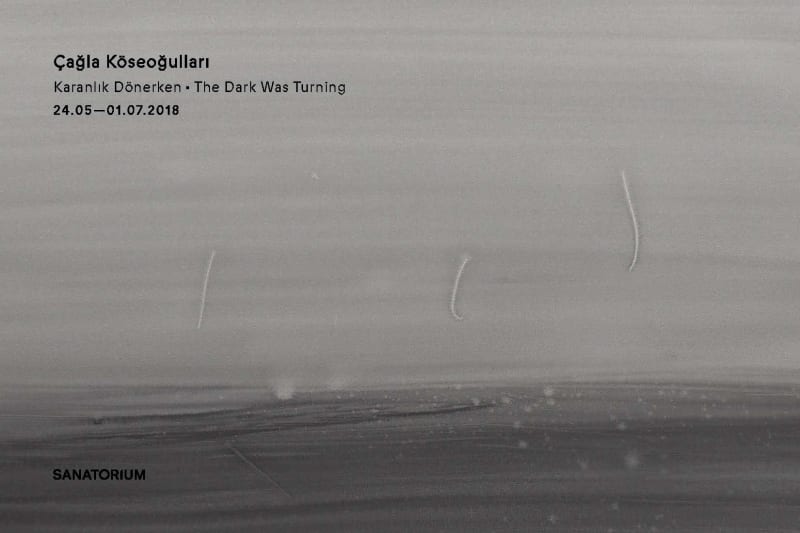Passing on Fast
Fatih Özgüven
‘This is not a story... it’s a story of instants that flash by, like fugitive tracks seen from a train window.’
Clarice Lispector, Água Viva
Along with the works in her exhibition the dark was turning, Çağla Köseoğulları shows us a 1-minute-31-second loop of a train journey. Hmm. Must we first look at this train journey, and then turn to these works?
Of course, in an exhibition, when it is a train journey that is presented to us, we cannot turn away from it.
On the other hand, the exhibition the dark was turning is more the story of the eye, rather than that of the train journey, of the eye looking out, observing, trailing the landscape from a train, while the landscape itself rapidly trails by. The word, seyr/seyir, in Turkish, alludes both to what is observed, and to what is moving. This, then, is the dual axis of Çağla’s works – observation and movement.
‘A thing that is observed fleetingly is not forgotten in time’, to change the line from a muchloved Turkish poem. That which passes on, slips by, that which is observed often forms a trace (in the back of our eye? in our mind?) and everything, the journey, events, pleasures and worries fill and fit into this trace. When all that is forgotten, the imprint remains. It is like a small pocket we can fill up with something.
When we set our sight on a scene passing on fast, when we lose ourselves in it, what we see is both movement, and form that moves, a stain-in-becoming. Like the landscape rapidly passing by our eyes in this exhibition, or rather, its trace. This is how Çağla’s landscapes that slip by work; they are landscapes that have now become form rather than just landscape. And so, as we look at them, despite and along with the reference to the train, we must perhaps think that these are the very traces that have become form, slipping past our gaze. Because these rivers hills plains valleys tunnels going-uphill-and-down-dale reach us as stains. A stain of what is seen, a trace of what is remembered.
,
But the eye serves an even more poetic function. When we close our eyes, behind our closed eyes, the stains that fall on the inner screen of our eyelids. Stains, lines, scratches, and other marks. The story of how, what we perceive with our eyes, reinterprets itself on the inner curtain of our eyelid.
The first are black, saturated and mostly composed from left to right (or our eyes are inclined to perceive them as such) whilst the others are greyish-white, and composed from top to bottom. Thus, a part of Çağla’s ‘things that pass’ constitute an inventory of this kind of seeing, of things we see when we interrupt the act of seeing.
We could also speak about the pre-digital image reflected on the movie screen, about the various scratches that form over time on the film strip, and above all, about that constantly whirring piece of scrape caught up in a corner of the film projector, and its trace in our memory.
But let that all be, I feel we have already well-filled our pockets in front of Çağla’s images.

